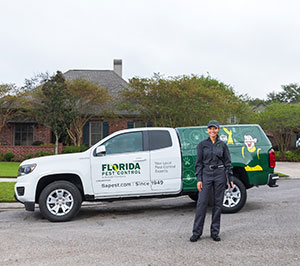Top Quality A1 Pest Control Services Charlotte - Safeguard Your Home
Top Quality A1 Pest Control Services Charlotte - Safeguard Your Home
Blog Article
Bed Pest Therapy Malfunction: Contrasting Chemical Vs. Non-Chemical Solutions
In the world of pest control, specifically when taking care of the persistent problem of bed pests, the option in between chemical and non-chemical therapy remedies can be a critical one. Both approaches offer unique advantages and drawbacks, influencing aspects such as effectiveness, safety factors to consider, and general price. By examining the nuanced information of each method, a more clear understanding of which path to pursue in addressing a bed bug infestation can be obtained.
Effectiveness of Chemical Therapies
Chemical therapies for bed pest infestations have actually been extensively recognized for their rapid and potent efficacy in eliminating these bugs. When considering the effectiveness of chemical treatments, it is important to understand that they can offer a comprehensive and quick remedy to a bed insect trouble.
Moreover, chemical treatments have the advantage of providing recurring results, implying that they can proceed to remove bed pests also after the preliminary application. This recurring action is especially advantageous in combating any possible re-infestations. In addition, the rapid activity of chemical therapies can bring relief to people encountering serious bed bug infestations, permitting them to gain back control of their home quickly.
Security Interest In Chemical Solutions
One crucial facet that calls for careful consideration when utilizing chemical remedies for bed bug therapy is making sure the safety of passengers and the environment. Exposure to certain chemicals utilized in bed insect treatments can lead to breathing concerns, skin inflammation, or various other damaging reactions, especially in individuals with pre-existing problems or sensitivities.
Moreover, the environmental effect of chemical services is another considerable factor to consider. Some pesticides made use of in bed bug treatments may be dangerous to helpful bugs, wild animals, and ecological communities if they seep right into the soil or water systems. It is necessary to utilize chemical therapies deliberately, adhering to safety guidelines, and taking into consideration much less toxic alternatives to reduce these dangers and guarantee the secure and effective monitoring of bed bug invasions.
Advantages of Non-Chemical Methods
Taking into consideration the possible security issues and ecological effect associated with chemical solutions for bed insect treatment, checking out non-chemical methods presents an appealing choice with numerous distinct benefits. Non-chemical therapies are ecologically pleasant, as they do his comment is here not contribute to air or water air pollution, making them a lasting choice for parasite control.
Additionally, non-chemical solutions can be effective in targeting bed insects, consisting of hard-to-reach areas where chemical therapies may not penetrate - A1 bed bug exterminator charlotte. Techniques such as warm treatment, vacuuming, steam cleansing, and cushion coverings give detailed removal without the usage of harmful chemicals.
Limitations of Non-Chemical Treatments

Additionally, non-chemical therapies typically call for multiple applications to achieve successful removal. This can be lengthy and might not always guarantee full removal of all bed bugs and their eggs, especially in hard-to-reach or surprise locations.
In addition, the success of non-chemical therapies greatly relies on appropriate application and thoroughness, which can be challenging for people without professional proficiency. Inadequate application of non-chemical techniques may cause incomplete eradication, resulting in relentless problems and the demand for added therapies.
For that reason, while non-chemical treatments have their advantages, it is important to acknowledge these constraints and consider them when determining one of the most reliable approach for handling bed bug infestations.
Expense Comparison: Chemical Vs. Non-Chemical Options
Offered the constraints connected with non-chemical treatments, a necessary element to assess in the context of bed insect monitoring is the expense contrast in between chemical and non-chemical choices. In contrast, non-chemical treatments like heat treatment or steam can be much more expensive, with expenses varying from $1,000 to $6,000 for a whole home. While the initial cost of chemical therapies might appear lower, several treatments may be required to totally eradicate the infestation, possibly raising the general cost.
Conclusion

Thinking about the prospective safety problems and ecological influence associated with chemical options for bed bug treatment, checking out non-chemical strategies provides an encouraging option with numerous distinctive advantages.Offered the constraints connected with non-chemical therapies, a vital element to examine in the context of my site bed pest monitoring is the expense comparison in between chemical and non-chemical options. In comparison, non-chemical therapies like warm treatment or heavy steam can be a lot more expensive, with prices varying from $1,000 to $6,000 for an entire home. While the initial expense of chemical therapies might seem lower, multiple therapies may be called for to fully get rid of the invasion, possibly increasing the general price.In verdict, when contrasting chemical and non-chemical bed pest treatment options, it is vital to take into consideration performance, security, advantages, restrictions, and expense.
Report this page